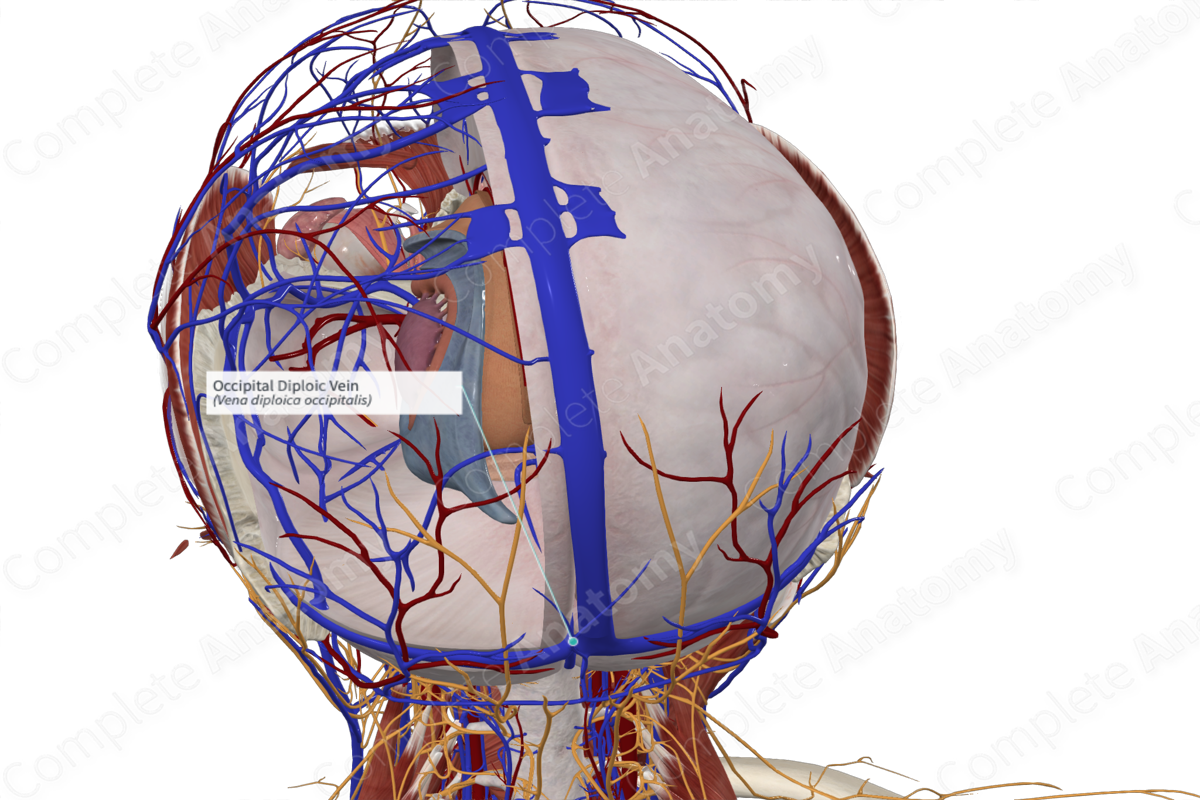
Quick Facts
Origin: Situated mainly in the occipital bone.
Course: Run through the diploic channels between the outer and inner tables of the cortical bone in the posterior occipital region.
Tributaries: None.
Drainage: Occipital bone.
Origin
The occipital diploic vein is situated mainly in the occipital bone.
Course
Diploic channels are situated in the diploe or the spongy layer, between the outer and inner tables of the cortical bones. The occipital diploic veins represent a network of valveless intraosseous veins which course primarily through the occipital bone.
Tributaries
There are no named tributaries; however, the occipital diploic vein communicates with the posterior temporal diploic vein.
Emissary veins such as the emissary mastoid vein and some occipital (and parietal) emissary veins link the occipital (and posterior temporal) diploic veins with the veins of the posterior scalp and neck (in the suboccipital venous plexus).
The occipital diploic vein opens either externally into the occipital vein (suboccipital plexus of veins), or internally into the transverse sinus or into the confluence of the sinuses (Garcia-Gonzalez et al., 2009).
Structures Drained
The occipital diploic vein drains the occipital bone.
References
Garcia-Gonzalez, U., Cavalcanti, D. D., Agrawal, A., Gonzalez, L. F., Wallace, R. C., Spetzler, R. F. and Preul, M. C. (2009) 'The diploic venous system: surgical anatomy and neurosurgical implications', Neurosurg Focus, 27(5), pp. E2.
Learn more about this topic from other Elsevier products
Vein

A venous sinus is a vein with a thin wall of endothelium that is devoid of smooth muscle to regulate its diameter.

